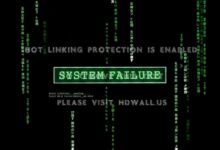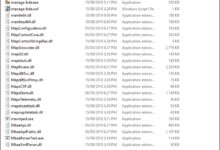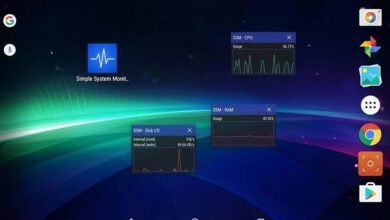System Crasher: 7 Shocking Truths You Must Know Now
Ever wondered what turns a smooth-running system into a frozen mess? Meet the system crasher—silent, sneaky, and sometimes intentional. Let’s dive into the world of crashes, chaos, and code gone wild.
What Exactly Is a System Crasher?

The term system crasher might sound like something out of a cyberpunk movie, but it’s very real—and increasingly relevant in today’s digital landscape. A system crasher refers to any software, hardware, or human action that causes a computing system to fail unexpectedly, leading to downtime, data loss, or security breaches. These crashes can range from minor glitches to catastrophic failures that bring entire networks to a halt.
Defining the Term ‘System Crasher’
At its core, a system crasher is any element—intentional or accidental—that disrupts normal system operations. This could be a malicious script, a faulty driver, an overloaded server, or even a user pressing the wrong key combination. The defining feature is the outcome: system instability or complete failure.
According to Techopedia, a system crash occurs when an operating system halts due to an internal failure, often requiring a reboot. When something consistently triggers this, it earns the label of a system crasher.
Types of System Crashers
- Software-based crashers: Bugs in code, memory leaks, or incompatible applications.
- Hardware-induced failures: Overheating CPUs, failing RAM, or power surges.
- Human-triggered events: Accidental deletion of critical files or misconfiguration of system settings.
- Malicious actors: Hackers deploying malware designed to crash systems (e.g., DoS attacks).
Each type has unique characteristics, but all share the ability to turn a stable environment into digital chaos.
Common Symptoms of a System Crasher
Recognizing a system crasher early can save hours of troubleshooting. Common signs include:
- Sudden blue screen of death (BSOD) on Windows.
- Kernel panics on macOS or Linux.
- Applications freezing or closing unexpectedly.
- Unresponsive user interfaces.
- Abnormal CPU or memory usage spikes.
“A system crash isn’t just an inconvenience—it’s a warning sign that something deeper is wrong.” — Dr. Elena Torres, Cybersecurity Researcher at MIT
Historical Examples of Notorious System Crashers
Throughout computing history, several infamous system crasher incidents have shaped how we design, secure, and maintain digital systems. These events weren’t just technical failures—they had real-world consequences, from financial losses to national security threats.
The Morris Worm (1988)
One of the first major system crasher events was the Morris Worm, created by Robert Tappan Morris, a Cornell graduate student. Designed as an experiment to measure the size of the internet, the worm exploited vulnerabilities in Unix systems and spread rapidly.
Due to a coding error, it replicated uncontrollably, consuming resources and crashing thousands of machines. It’s estimated that up to 10% of the internet at the time—around 6,000 computers—were affected.
This incident led to the creation of the first Computer Emergency Response Team (CERT) and highlighted the need for better cybersecurity practices. Learn more at CERIAS.
Windows 98 Stability Issues
While not a single event, the widespread instability of Windows 98 made it a breeding ground for system crasher scenarios. Poor memory management, lack of hardware abstraction, and reliance on DOS components meant that a single misbehaving application could bring the entire OS down.
Users frequently encountered General Protection Faults (GPFs) and BSODs. Microsoft eventually addressed many of these issues with the release of Windows XP, which introduced a more robust kernel and better driver isolation.
The 2003 Northeast Blackout
Though primarily a power grid failure, this event exposed how interconnected systems can become victims of a system crasher. A software bug in an Ohio-based energy company’s monitoring system failed to alert operators about overloaded transmission lines.
The cascading failure led to a blackout affecting 55 million people across the U.S. and Canada. The U.S. Department of Energy’s report highlighted that inadequate system monitoring and slow response times turned a small glitch into a continental disaster.
How System Crashers Exploit Vulnerabilities
Understanding how a system crasher gains access is crucial for prevention. Most exploit existing weaknesses in software design, configuration, or human behavior. These vulnerabilities act as open doors for instability.
Memory Corruption and Buffer Overflows
One of the most common techniques used by system crasher code is the buffer overflow. This occurs when a program writes more data to a memory buffer than it can hold, spilling into adjacent areas.
If an attacker controls this overflow, they can overwrite critical system functions or inject malicious code. For example, the Blaster worm exploited a buffer overflow in Windows DCOM to crash systems and spread malware.
Denial-of-Service (DoS) Attacks
A DoS attack is a deliberate form of system crasher behavior where an attacker floods a system with traffic or requests, overwhelming its capacity. When scaled, this becomes a Distributed Denial-of-Service (DDoS) attack.
For instance, in 2016, the Mirai botnet launched a massive DDoS attack on Dyn, a DNS provider, crashing major websites like Twitter, Netflix, and Reddit. The attack leveraged thousands of compromised IoT devices, showing how weakly secured hardware can become a system crasher at scale.
Driver and Kernel-Level Exploits
Device drivers operate at a high privilege level, making them a prime target for system crasher attacks. A poorly written or malicious driver can corrupt kernel memory, leading to immediate system failure.
Microsoft’s Driver Verifier tool was developed specifically to detect such issues during development. However, many third-party drivers still slip through, especially in gaming or specialized hardware ecosystems.
The Role of Malware as a System Crasher
Not all system crasher incidents are accidental. Many are driven by malware designed explicitly to destabilize or destroy systems. These programs range from pranks to cyberwarfare tools.
Ransomware That Crashes Systems
While most ransomware encrypts files, some variants go further by corrupting system files or overloading resources to prevent recovery. For example, the NotPetya attack in 2017 didn’t just encrypt data—it overwrote the master boot record (MBR), making systems unbootable.
Originally targeting Ukrainian organizations, it spread globally, causing over $10 billion in damages. Companies like Maersk and Merck reported complete IT shutdowns. Read more at CISA.
Logic Bombs and Time Bombs
A logic bomb is a piece of code intentionally inserted into a system that triggers a destructive action when certain conditions are met. It’s a stealthy form of system crasher often used in insider threats.
In 2008, a former employee of Fannie Mae planted a logic bomb that would have deleted critical data from 4,000 servers. The attack was discovered before activation, but it highlighted how trusted insiders can become human system crashers.
Wiper Malware: Beyond Crashing to Erasing
Wiper malware doesn’t just crash systems—it obliterates them. Unlike ransomware, which holds data hostage, wipers permanently delete files and overwrite storage.
Examples include Shamoon (used in attacks on Saudi Aramco in 2012) and HermeticWiper (deployed during the 2022 Russian invasion of Ukraine). These tools are often state-sponsored and serve as digital weapons, turning systems into useless bricks.
System Crasher in Gaming: Cheaters and Exploiters
The term system crasher also appears in online gaming communities, where it refers to players or tools that exploit game mechanics to crash opponents’ systems or disrupt gameplay.
Game-Specific Exploits
In games like Minecraft, Fortnite, or Call of Duty, hackers have developed tools that send malformed packets or excessive data to clients, causing them to freeze or disconnect. These are often called “crash exploits” or “crash bugs.”
For example, in 2020, a vulnerability in Minecraft’s chat system allowed attackers to send specially crafted Unicode characters that would crash the game client on older versions. Mojang patched the issue, but not before thousands of players were affected.
Modding Gone Wrong
While mods enhance gameplay, poorly coded ones can turn into accidental system crasher tools. In games like The Elder Scrolls V: Skyrim or Grand Theft Auto V, incompatible mods or script-heavy additions can overload the game engine.
Tools like LOOT (Load Order Optimization Tool) and Mod Organizer help manage this, but user error remains a major cause of crashes. The Nexus Mods community frequently warns users about “nexus crashes” caused by conflicting mods.
Anti-Cheat Systems as Potential Crashers
Ironically, some anti-cheat systems have themselves been labeled system crasher tools. Software like Easy Anti-Cheat (EAC) or BattlEye runs at a deep system level, monitoring for suspicious behavior.
In some cases, these tools conflict with other software (like overclocking utilities or screen recorders), leading to BSODs. In 2021, EAC was linked to crashes on Windows 10 due to kernel-level conflicts, prompting Microsoft and game developers to issue patches.
Preventing System Crasher Incidents
While it’s impossible to eliminate all risks, organizations and individuals can take proactive steps to reduce the likelihood and impact of a system crasher event.
Regular Software Updates and Patch Management
One of the most effective defenses is keeping software up to date. Many system crasher exploits target known vulnerabilities that have already been patched.
Automated patch management tools like Windows Update, WSUS, or third-party solutions (e.g., SolarWinds Patch Manager) ensure systems stay protected. The 2017 WannaCry attack, which used an unpatched SMB vulnerability, could have been prevented if organizations had applied Microsoft’s update.
Robust System Monitoring and Logging
Early detection is key. Tools like Nagios, Zabbix, or Microsoft System Center monitor system health in real time, alerting administrators to unusual CPU usage, memory leaks, or network anomalies.
Centralized logging with platforms like ELK Stack (Elasticsearch, Logstash, Kibana) or Splunk allows for forensic analysis after a crash, helping identify the root cause of a system crasher event.
User Training and Access Control
Humans are often the weakest link. Training users to avoid suspicious links, not install unauthorized software, and report odd behavior reduces the risk of accidental system crasher incidents.
Implementing the principle of least privilege (PoLP) ensures users only have the access they need, limiting the damage if a system is compromised.
Recovering from a System Crasher Event
When a system crasher strikes, recovery speed determines the extent of damage. A well-prepared response plan can mean the difference between minutes of downtime and weeks of data loss.
Immediate Response Steps
When a crash occurs, follow these steps:
- Isolate the affected system to prevent spread.
- Document symptoms (error codes, crash logs, timestamps).
- Check backups for integrity and availability.
- Engage IT support or incident response teams.
For businesses, having an incident response plan (IRP) is critical. NIST provides a comprehensive guide on Computer Security Incident Handling.
Data Recovery and System Restoration
After containment, focus shifts to recovery. Use clean backups to restore systems. If malware is involved, ensure the backup predates the infection.
Tools like Acronis, Veeam, or Windows System Restore can roll back systems to a stable state. Always verify data integrity post-recovery.
Post-Mortem Analysis and Prevention
Once systems are back online, conduct a root cause analysis (RCA). Ask:
- What triggered the crash?
- Was it preventable?
- How can we improve monitoring or defenses?
Document findings and update security policies accordingly. This closes the loop and strengthens resilience against future system crasher threats.
Future Trends: AI and the Evolution of System Crashers
As technology evolves, so do system crasher methods. Artificial intelligence and machine learning are now being used both to create and combat these threats.
AI-Powered Crash Generation
Researchers are using AI to automatically discover software vulnerabilities. Tools like fuzzers enhanced with machine learning can generate inputs that maximize code coverage, increasing the chance of triggering a crash.
Google’s Project Zero uses AI-driven fuzzing to find zero-day exploits before attackers do. However, the same technology could be weaponized to create smarter, adaptive system crasher tools.
AI in Anomaly Detection
On the defense side, AI is revolutionizing threat detection. Systems like Microsoft Defender for Endpoint use behavioral analytics to identify unusual patterns that may indicate a system crasher in progress.
These tools learn normal system behavior and flag deviations—like a sudden spike in disk I/O or unauthorized kernel access—before a crash occurs.
The Rise of Quantum Computing Threats
While still in its infancy, quantum computing poses a future risk. A sufficiently powerful quantum computer could break current encryption standards, destabilizing secure systems and creating new avenues for system crasher attacks.
Organizations are already exploring post-quantum cryptography to prepare for this eventuality.
What is a system crasher?
A system crasher is any software, hardware, or human action that causes a computing system to fail unexpectedly. This can include bugs, malware, hardware failures, or malicious attacks designed to disrupt or destroy system functionality.
Can a system crasher be accidental?
Yes, many system crashers are unintentional. Examples include poorly coded software, misconfigured settings, or hardware malfunctions. However, some are deliberately created, such as malware or logic bombs.
How can I protect my system from crashers?
Keep software updated, use reliable antivirus tools, enable firewalls, monitor system performance, and educate users. Regular backups and incident response plans are also essential for recovery.
Are gaming crash exploits illegal?
In many jurisdictions, exploiting game vulnerabilities to crash others’ systems can violate computer fraud and abuse laws. Game companies also ban users who engage in such behavior, often permanently.
Can AI prevent system crasher attacks?
Yes, AI-powered security tools can detect abnormal behavior and predict potential crashes before they happen. However, AI can also be used by attackers to find vulnerabilities, making the digital arms race ongoing.
From accidental bugs to malicious cyberweapons, the world of the system crasher is vast and ever-evolving. Whether it’s a faulty driver, a ransomware attack, or a gamer exploiting a glitch, the impact can be severe. Understanding the causes, recognizing the signs, and implementing strong defenses are crucial steps in protecting digital environments. As technology advances, so too must our strategies for resilience. The key lies in vigilance, preparation, and continuous learning—because in the digital age, no system is immune.
Further Reading:









